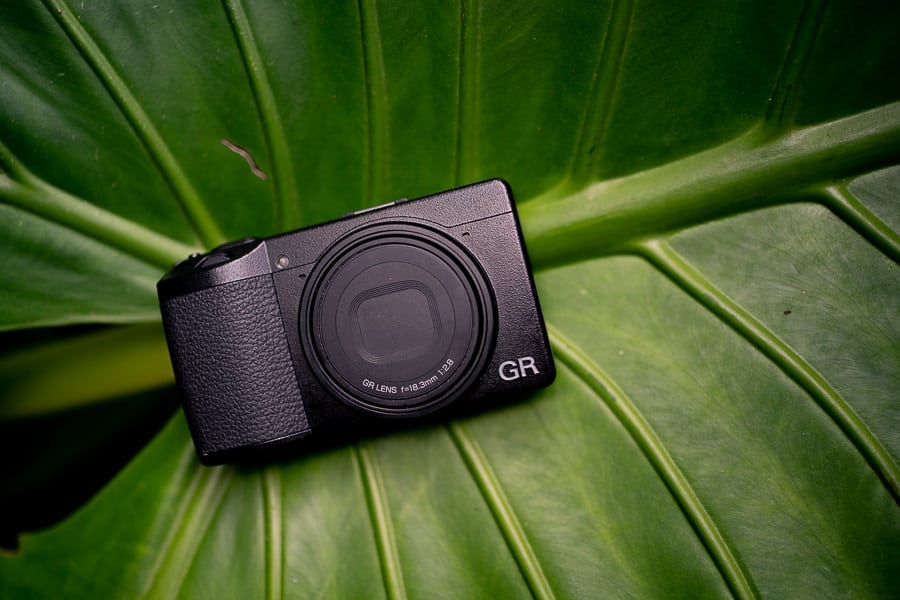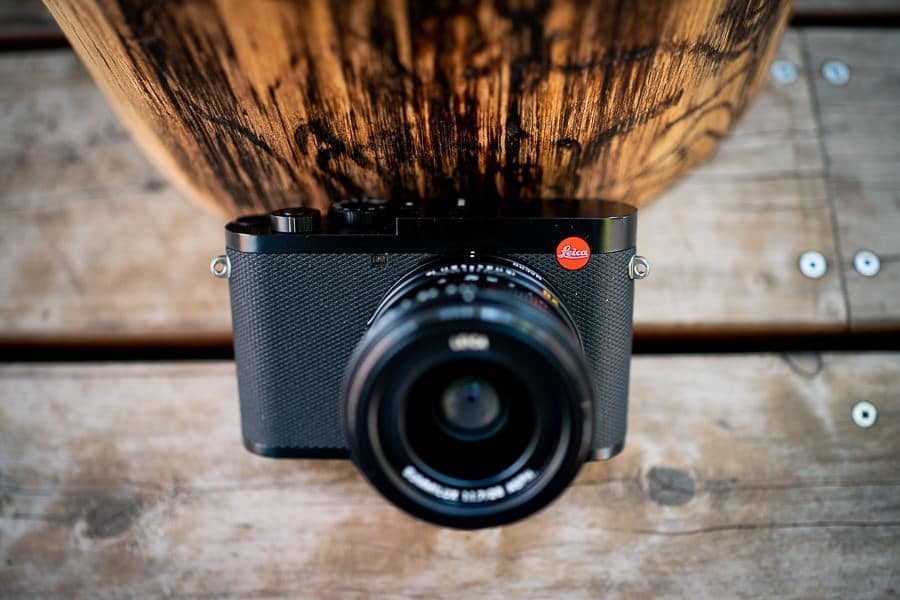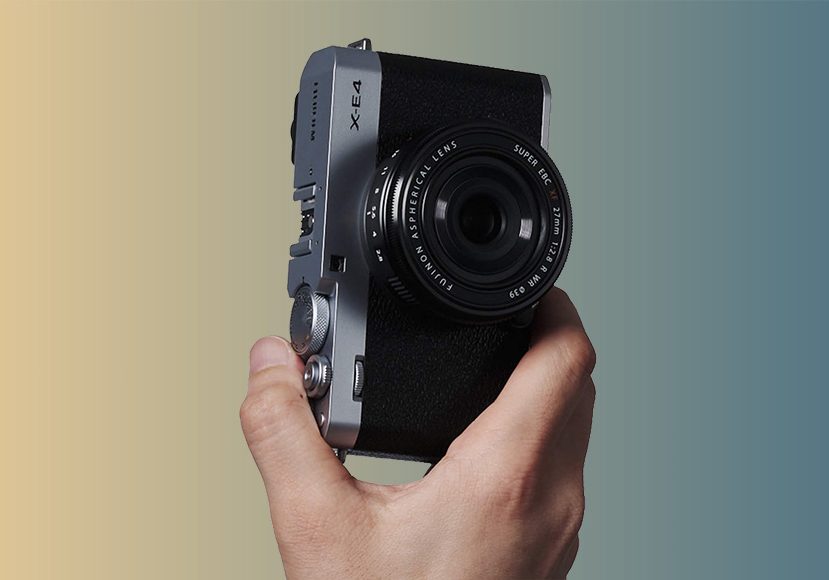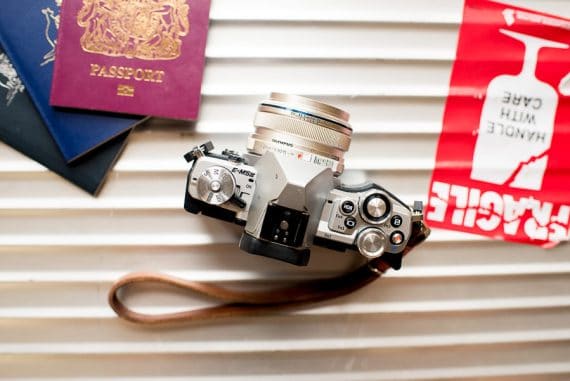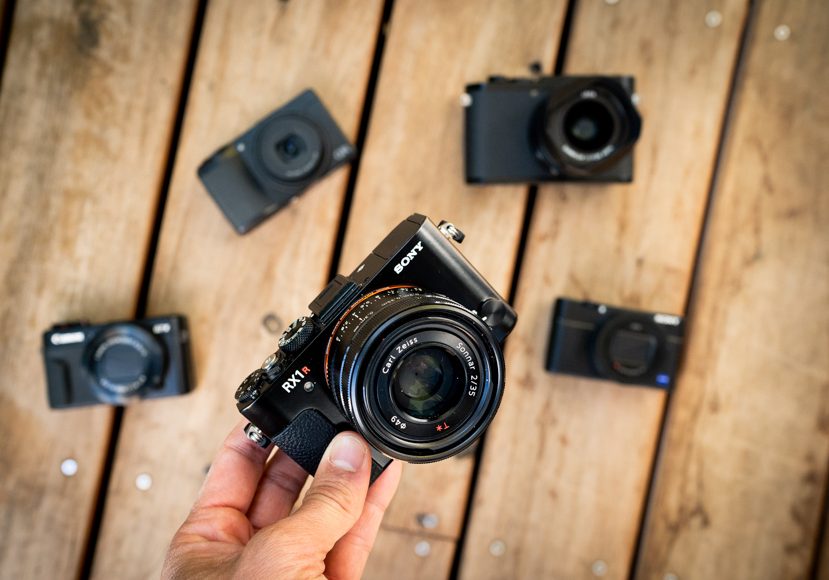
Top 6 Alternatives to the Fujifilm X100V in 2023
Having a hard time getting your hands on a Fujifilm x100v? These six alternatives that offer similar or better features and performance for your money.
Here’s our guide to the best Fujifilm X100V alternatives for anyone who’s struggling to get hold of one.
We’re one of the lucky ones who bought and reviewed the X100V when it was released back in February 2020.
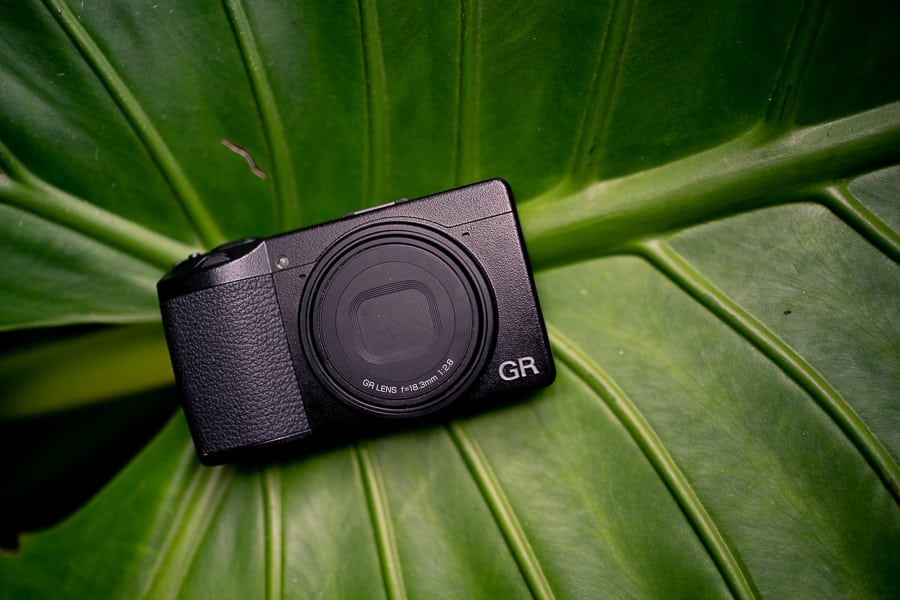
Smaller, lighter and more affordable than the Fuji X100V with comparable image quality. Great fun to carry everyday.
We’ve also tested every other camera on this list, and they’re all similar to the Fuji X100V.
Let’s take a quick look at the criteria and then dive into the recommendations.
What features should an alternative to the Fuji X100V have?
- Most important: Retro-styled good looks!
- Comparable sensor size (APS-C or full-frame)
- Compact and portable design
- High-quality fixed lens
- Integrated viewfinder
- Manual control dials
- Distinctive color profiles/film simulations.
- Weather resistance
- Responsive autofocus system
- Wireless connectivity options
Table of Contents
What is the Best Fujifilm x100v Alternative in 2023?
Ricoh GR III (Most compact Fujifilm X100V alternative)
- Incredibly compact camera body
- Great close-focus capabiltiies
- Easy-to-use control layout
- Nice selection of picture styles
- Shake Reduction system
- Poor battery life
- Lacks 4K video
The Ricoh GRIII brings rapid operation and reliably consistent image quality and combines it with an exceptionally compact body with a fixed lens system.
With its intuitive and refined control interface, which the company has continued to refine over decades, it’s a great entry-level lens for those who are new to photography.
Featuring a fixed lens APS-C sensor and a wide angle 28mm equivalent lens, it’s capable of creating smooth and creamy bokeh thanks to its F2.8 aperture.
(There’s also the GRIIIx model if you prefer a 40mm lens on a near-identical camera.)

While it lacks the hybrid viewfinder of the Fujifilm X100V, it’s nevertheless a wonderful and tactile camera to shoot with, delivering fast operation in most lighting conditions.
The ‘Snap Focus’ feature lets you take over the camera’s auto focus by shooting using one of six predefined focus distances (1m, 1,5m, 2m, 2,5m, 5m or Infinity), something that has won over legions of famous street photographers.
It’s also a genuinely pocketable camera, capable of fitting in the top pocket of a shirt for quick access and lending it perfectly to casual travel, everyday use and again, street photography.
The Ricoh GRIII falls short when it comes to autofocus and battery life, and there’s some vignetting even when shooting at the smaller apertures.
It also doesn’t have a tilting LCD screen, which in my opinion is a huge letdown for a near-perfect camera for candid photography.

The GRIII is much smaller than the X100V.
Also, if you’re looking for an alternative to the X100V for shooting video, you may want to skip the GRIII, since it lacks 4K, and there are better digital cameras in this price range you can go for.
With that said, for photography, there’s plenty to love, with a series of picture-style presets that compare favorably to the Fujifilm film simulations to play with.
The only issue is finding it in stock – check out these Ricoh GR III alternatives if you’re out of luck.
Leica Q2 (Full frame Fujifilm X100V alternative)
- Great image quality
- High-resolution full-frame image sensor
- Full weather sealing
- Nice 4K video
- Intuitive user interface
- Sharp electronic viewfinder
- Wi-Fi
- Very expensive
- Fluttering when using continuous AF
- Newer model available
- No flip screen
Leica has long been synonymous with high-end luxury cameras that blend tidy ergonomics and useability with exceptional image quality and versatile performance.
The Leica Q2 is no exception, a high-quality camera that pairs a bright and sharp wide-angle lens with fast autofocus and in-body image stabilization that makes it a joy to use.
It features a manual aperture ring capable of f/1.7 combined with an impressive 47.3MP sensor that allows for plenty of leeway when cropping images in post-production.
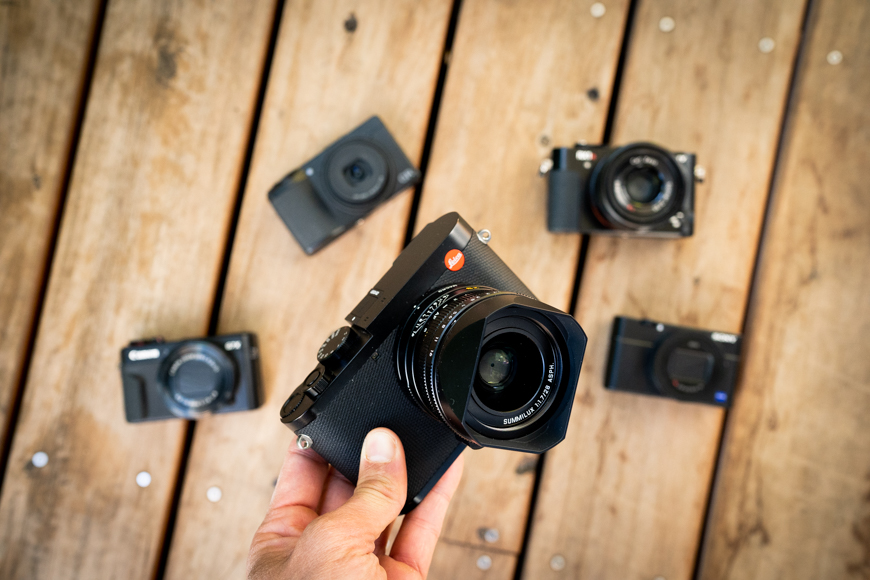
The Q2 has better image quality than the X100V but is also much bigger, heavier and more expensive.
With its tactile controls and lightweight size, functionality is enhanced thanks to its pop-up EVF and the ability to fine-tune your shots with the manual focus controls.
The minimalist design of the Leica Q2 belies what’s essentially a truly powerful camera that takes the classic styling of retro cameras to house the latest technology.
This includes excellent 4K video footage for videographers and other content creators who want a compact retro camera that can deliver more than just great photographs.
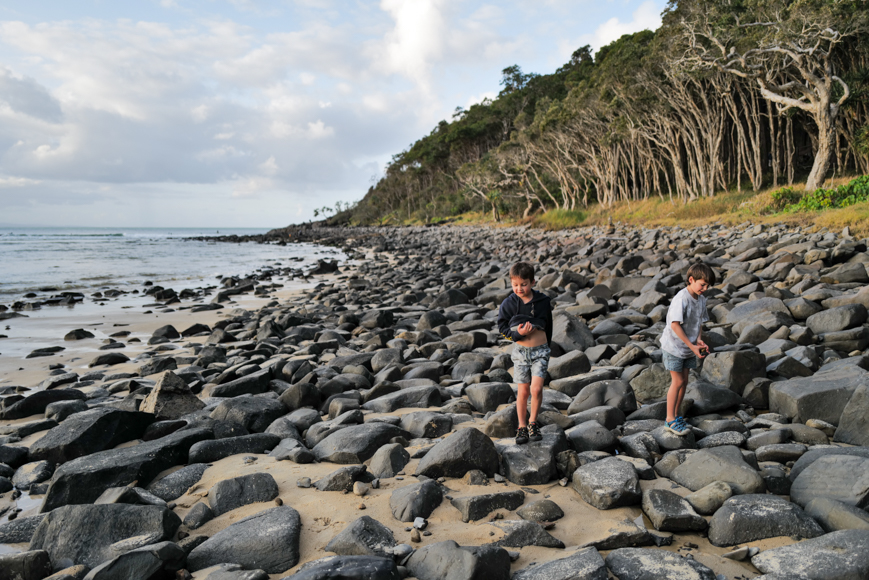
The combination of a wide angle with a fast aperture is unique to the Q2.
Full weather protection further enhances its appeal for adventurous photographers who want the best possible quality without the need for cumbersome camera bags and accessories.
As pricey as you might expect for a Leica camera, the Q2 is a truly lovely camera with a large sensor, and a great alternative to the Fujifilm X100V for photographers with plenty of money to spare.
Fujifilm X-E4 + 27mm f/2.8 Lens (Budget Fujifilm X100V alternative)
- Lightweight and compact design
- 18 film simulation modes
- Tilting touch LCD screen
- Tactile dial control
- Prime lens kit option
- OLED viewfinder
- No viewfinder
- Unsuitable for heavier lenses
Perhaps the most common alternative to the X100V for street photography is the Fujifilm X-E4, a great compact camera with interchangeable lenses and tactile physical dials.
Representing excellent value for money, the Fujifilm X-E4’s slim, rangefinder-style body and combination of textured handgrip with metallic controls lends it a perfect retro aesthetic – it’s a digital camera that looks like a film camera.
When paired with the 27mm f/2.8 lens, it’s a highly capable and versatile compact camera for casual photography that maintains a minimum profile with the flat-front body.
Featuring a crisp and accurate flip-out screen at 2.4 million dots, it delivers a fun shooting experience and produces sharp and vibrant images in most conditions.
There are plenty of film simulation modes to create a different look to your shots, with the Classic Negative producing the popular 1980s throwback aesthetic that makes retro cameras so appealing.
There’s also fast and reliable autofocus for action photography, using face and eye detection effectively and with the option to set the focus manually for more precise results.
This performance, combined with a more affordable price tag, makes the X-E4 a good alternative to the X100V for those who don’t want to be stuck with the limitations of a fixed lens.
Panasonic Lumix LX100 II
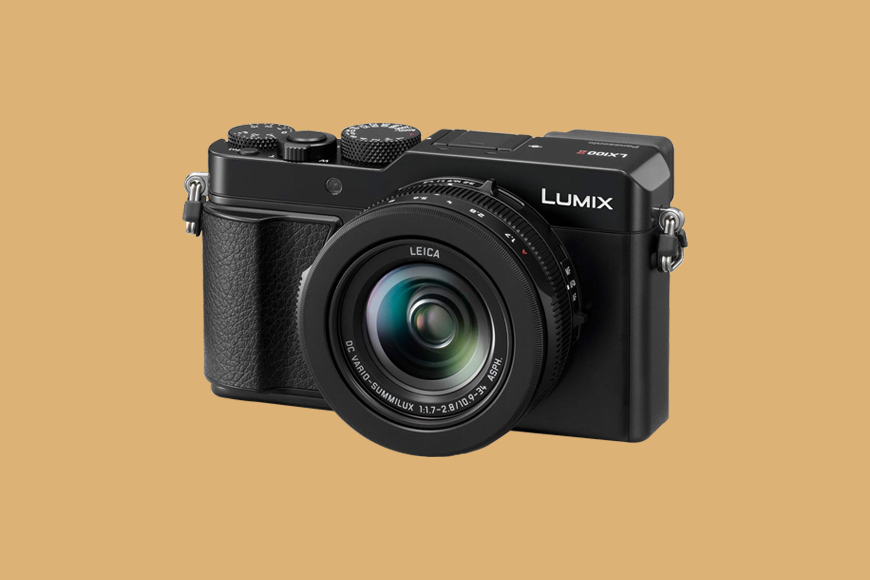
- Impressive image quality
- Features a standard zoom lens
- Fast and responsive autofocus
- Large sensor
- Tactile body-mounted controls
- Cropped video
- Fixed rear screen
The Panasonic Lumix LX100 II represents a marked improvement over its predecessor, with a higher resolution sensor and an easy-to-use touchscreen with customizable controls.
It’s more compact and lightweight than the Fujifilm X100V, with greater versatility in its aperture and the added advantage of a zoom lens for more shooting options.
Capable of shooting both JPEG and raw files, it produces sharp and vivid images and packs a large sensor into its small body with a maximum possible resolution of 17MP.
The option to choose from four aspect ratios, including 4:3, 3:2, 16:9, and 1:1m, further opens up its potential for capturing a variety of shots to suit various photography styles.
Capable of recording up to 4K video, there’s also a handy 4K photo mode you can use to maximize its potential, although be aware of a crop on video that limits its wide-angle capability.
Additional modes you can use with the Panasonic Lumix LX100 II include a range of great picture styles along with Post Focus, Sequence Composition, and Focus Stacking tools.
Meanwhile, Bluetooth and Wi-Fi connectivity allows users to quickly download and share their photos instantly on social media and other online platforms while on the move.
While the Panasonic Lumix LX100 II falls short of the X100V in terms of overall image quality and low-light performance, it’s a solid alternative with a versatile fixed lens,
Fujifilm X100F
- Gorgeous retro design
- Superb image quality
- Impressive battery life
- Hybrid viewfinder
- USB charging option
- In-camera Raw conversion
- Slow autofocus
- Outdated 1080p video
Another popular alternative to the Fujifilm X100V, albeit one that can be tricky to track down, is the X100F – the model prior to the X100V.
The camera’s 24.3MP X-Trans CMOS III sensor, combined with the fixed lens at 23mm f/2, makes it more than capable of producing wonderful images in most shooting conditions.
Its JPEG images offer excellent colour reproduction, with the usual Film Simulation options that have made the Fujifilm cameras so popular with their retro charm and aesthetic.
This retro appeal is evident in the design of the X100 F, combining a textured, leather-style grip with chrome controls and a pleasingly compact design.

Image quality of the X100F is very similar to the X100V | Jonas Rask
An improved ISO range of 200-12,800 makes it a capable performer in low-lighting conditions, while the hybrid viewfinder gives users the best of both worlds when framing shots.
It also features a Real Time Parallax Correction function that kicks into gear when shooting objects close by, shifting the frame guides for improved compositions.
Like other digital cameras in its class, the Fujifilm X100F offers video recording capabilities, although this is capped at 1080p, so may be limiting for hardcore video content creators.
The fixed 35mm equivalent lens may also feel a little restrictive for some, so if you have other lenses you’d like to use, the X-E4 may be a better option for your needs.
Also, the auto-focus isn’t as fast as the X100V, but it’s still quick enough for most everyday photography purposes.
These minor criticisms aside, if you can track down a Fujifilm X100F on the secondhand market, it offers an impressive shooting experience comparable to other cameras in its class.
Sony RX1R II (Compact full frame X100V alternative)
- Ergonomic design
- Full-frame 42-megapixel image sensor
- Sharp 35mm f/2 fixed lens
- Superb image quality
- Tilting rear display
- Retractable viewfinder
- Expensive
- Poor battery life
- Slow auto focus and shooting speed
A larger and more expensive alternative to the Fujifilm X100V is the Sony RX1R II, which retains the retro-style body design albeit in a bulkier format.
Capable of producing exceptional high-resolution images with its 42MP full-frame sensor, it’s fitted with a non-zooming fixed lens boasting an f/2 aperture.
While its metal body is on the larger side, it’s still compact enough to fit inside a larger coat pocket for casual street photography and other on-the-go shooting.
The fixed lens from Zeiss comes with a physical aperture ring supporting third-stop adjustment down to f/22 when set to Aperture Priority mode.

Beautiful focus falloff and 3D-like rendering from the amazing f/2 lens + 35mm sensor of the Sony RX1 RII | 1/125 f/2 ISO2000

100% crop shows incredible detail in the 42.4MP files
It also comes with a focus range selector ring on its fixed lens, giving it a more in-depth range of shooting options than other digital cameras in this class.
There’s also a tilting LCD screen, as well as a high-resolution OLED viewfinder, although the lack of 4K video shooting is a missed opportunity, particularly considering the price.
With that said, the Sony RX1R II has clearly been designed with photographers in mind, and videographers have plenty of other digital cameras worth considering.
While the Sony RX1R II is let down by poor battery life and somewhat dated tech, it’s nevertheless a great fixed-lens camera that offers image quality comparable to pro bodies.
Why Is the FujiFilm X100V So Popular with YouTubers & Instagrammers?

It’s hard not to fall in love with the gorgeous retro-looks of the X100V.
The Fujifilm X100V HAS gained a significant following among many photographers, YouTubers, and Instagrammers.
Its popularity can be attributed to several reasons:
- Retro Styling: Fujifilm cameras, including the X100V, are renowned for their retro aesthetics which resonate with a lot of people. This styling makes the camera not only a tool but also an accessory or a statement piece, especially for Instagrammers who may include their gear in photos or stories. It’s without a doubt the best retro camera available.
- Compact Size: The X100V offers a combination of portability with powerful features. Its compact size makes it easy to carry around for everyday photography, vlogging, or travel.
- Film stock simulations: Although not exclusive to the X100V, the film simulations that Fujifilm incorporates into its X-series cameras are another significant reason for their popularity, especially among YouTubers, Instagrammers, and photographers who are fans of the classic film aesthetic.
- Advanced Features: Despite its compact size, the X100V boasts features often found in larger professional cameras. This includes a 26.1MP APS-C X-Trans CMOS 4 sensor, a sharp fixed 23mm f/2 lens, a hybrid viewfinder, and 4K video recording.
- Image Quality: The X100V produces impressive image quality with vibrant colors that many users find appealing, especially for social media. The in-camera film simulations add to its charm, allowing users to achieve different looks without post-processing.
- Usability: The manual dials and controls on the X100V make it intuitive for those who prefer a tactile approach to camera settings. This can be appealing to photographers who enjoy the process of making an image as much as the result.
- Fixed Lens Simplicity: The fixed 23mm lens (equivalent to 35mm in full-frame terms) simplifies the shooting experience. While some might see this as a limitation, others value the creative constraint, making them more mindful of composition and framing.
- Silent Shooting: The leaf shutter and the possibility for electronic shutter allow for near-silent shooting. This is particularly useful for street photographers or vloggers who want to be unobtrusive.
- Built-In ND Filter: The X100V comes with a built-in 4-stop ND filter which can be very helpful for shooting in bright conditions or when aiming for wider apertures in daylight.
- Fuji X100 Accessories: It’s hardly surprising that a camera that looks as gorgeous as the X100V would have so many great accessories.
- Price Point: While the X100V isn’t exactly cheap, when compared to full-frame mirrorless cameras with equivalent lenses, it offers a more affordable entry into high-quality photography.
FAQs
Is Fujifilm X-E4 better than X100V?
The Fujifilm X-E4 and X100V are similar cameras with specifications that compare well to one another, albeit with a few notable differences.
Perhaps the main advantage the X-E4 has is its interchangeable lens system, which makes it more versatile for different shooting scenarios compared to the fixed lens of the X100V.
While the X100V has a fixed lens, its lightweight design and grip make it more adept at on-the-go captures for travel photography and content creation.
Why is the X100V so hard to get?
The X100V has become increasingly popular among online content creators who post images to Instagram and on-the-fly TikTok videos.
Unfortunately, as a result of this popularity, picking up an X100V isn’t always easy, as Fujifilm has struggled to keep up with demand.
As such, the price of the X100V has increased to the point where it’s now more expensive on the secondhand market than its original retail price tag.

Smaller, lighter and more affordable than the Fuji X100V with comparable image quality. Great fun to carry everyday.





